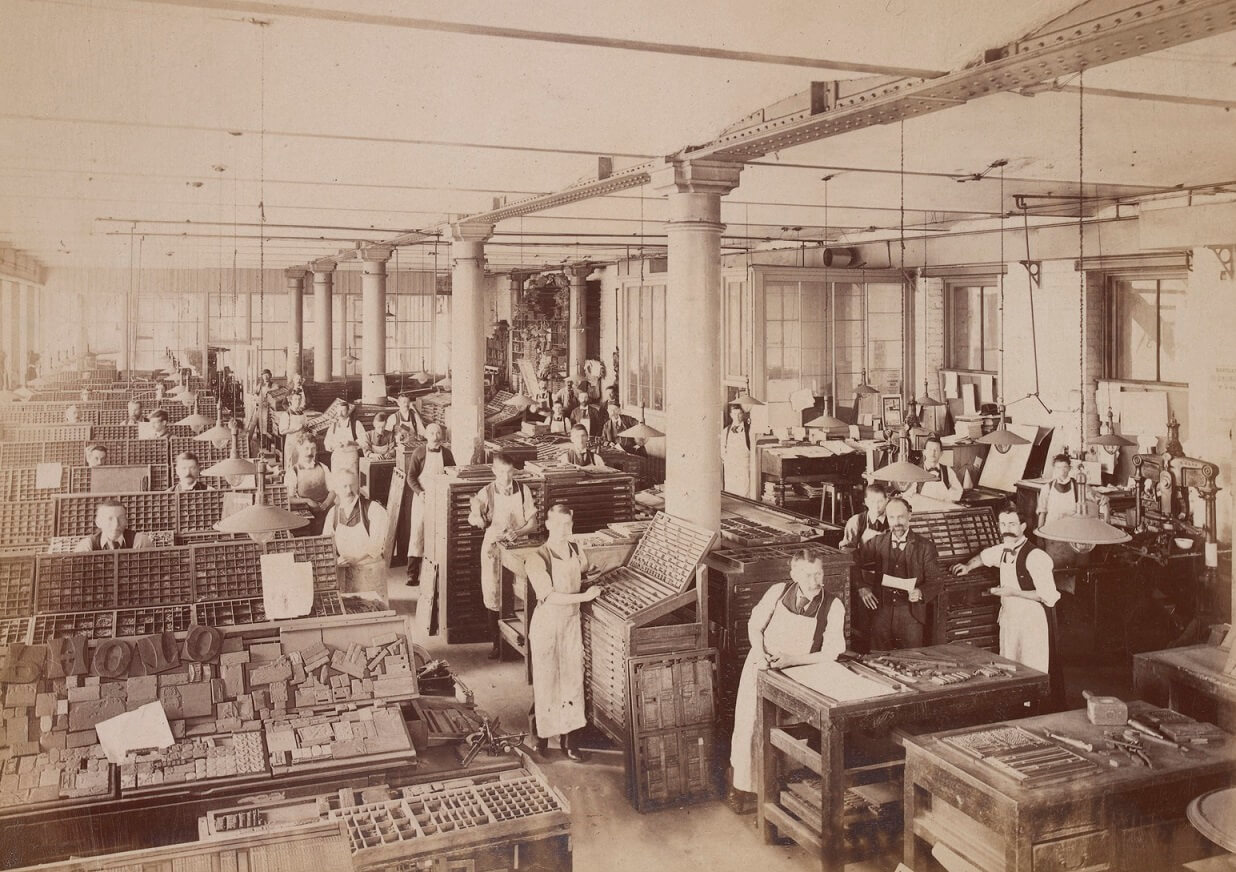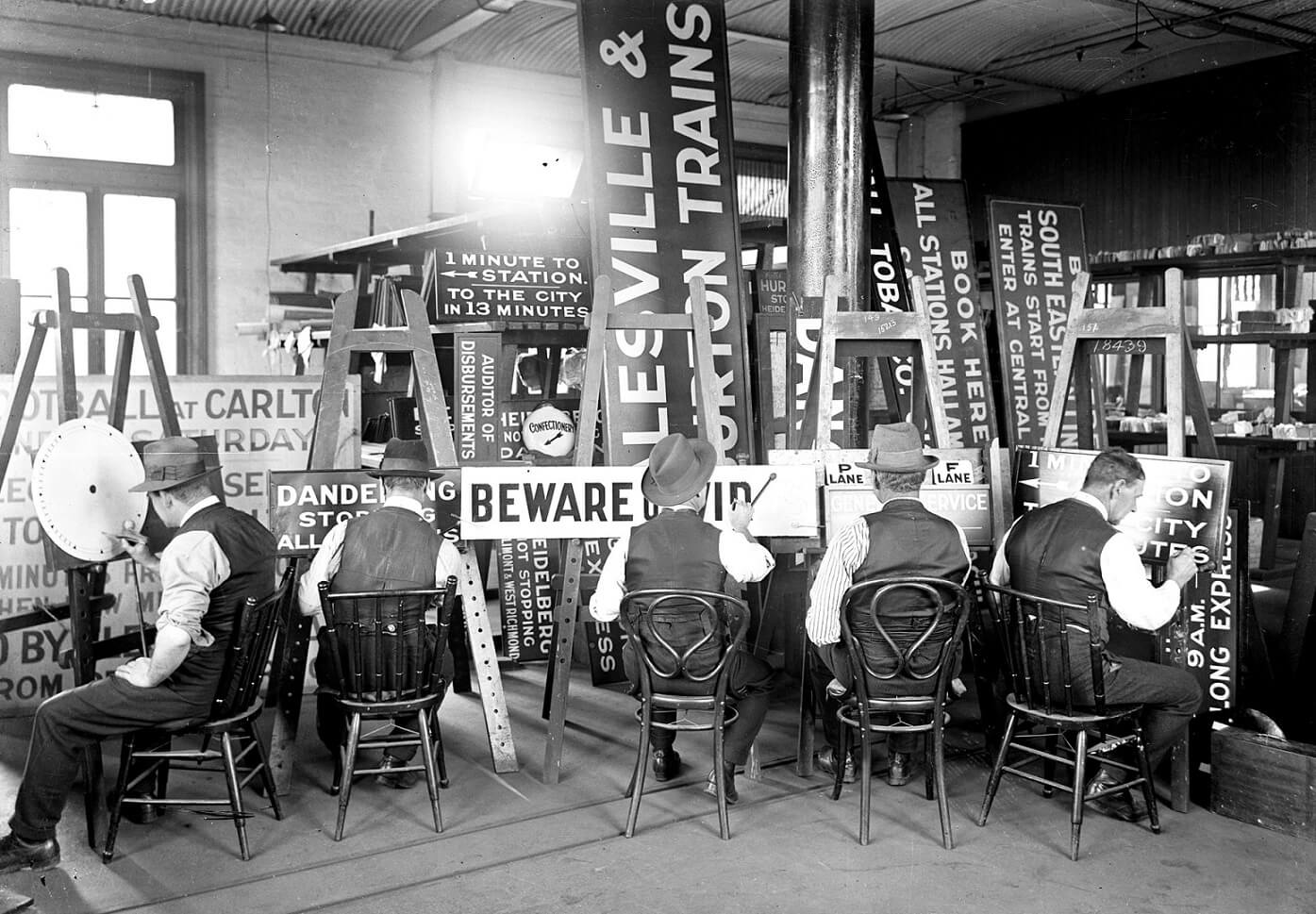From 1450 to the late-nineteenth century, the printed word was set one letter at a time. Compositors selected individual letters to make up a line of type, setting it in a hand-held stick. This was transferred to a case – the ‘forme’ – and the process was repeated. When a page was completed, the forme was locked tight, ready for the printing press.
Compositors earned more – considerably more – than other skilled craftsmen. At the Argus newspaper in the 1850s a skilled compositor could earn as much as £18 per week. A mason or bricklayer earned only £6. But it was not a job for the faint-hearted. It was relentless, with long hours and few breaks. There was little ventilation in the composing rooms and lead dust from the type hung heavy in the air. Occupational hazards included phthisis or the more serious lead poisoning.
Composing Department at Sands & McDougall Limited, Melbourne, by unknown photographer, 1896
Reproduced courtesy State Library Victoria
Until the 1890s typesetting was done entirely by hand. A typesetter, or compositor, stood at a tilted shelf, or ‘case’, assembling the letters, backwards and upside down, in a type stick. The swiftest compositor could assemble about 2,000 letters per hour. (The terms ‘uppercase’ and ‘lowercase’ comes from the way the type was sorted. The smaller letters, which were used most often, came from the lower case which was easier to reach.)
Few women entered the composing room: in fact, unions organised effectively to exclude women from ‘their’ work. All staff on the Melbourne daily newspapers were male although commercial printing works employed some female compositors. The 1892 Census recorded only 14 women compositors compared to 1,514 men.
Sign-writers, Victorian Railways, Melbourne, by unknown photographer, c.1920
Reproduced courtesy Public Record Office Victoria
Billboards, murals, banners, storefronts, even railway signs, were once all painted by hand. Artworks are now digitally designed, with lettering produced through die-cut vinyl plotters and inkjet printers. Like so many crafts and trades in the print industry, the art of signwriting has largely disappeared.


